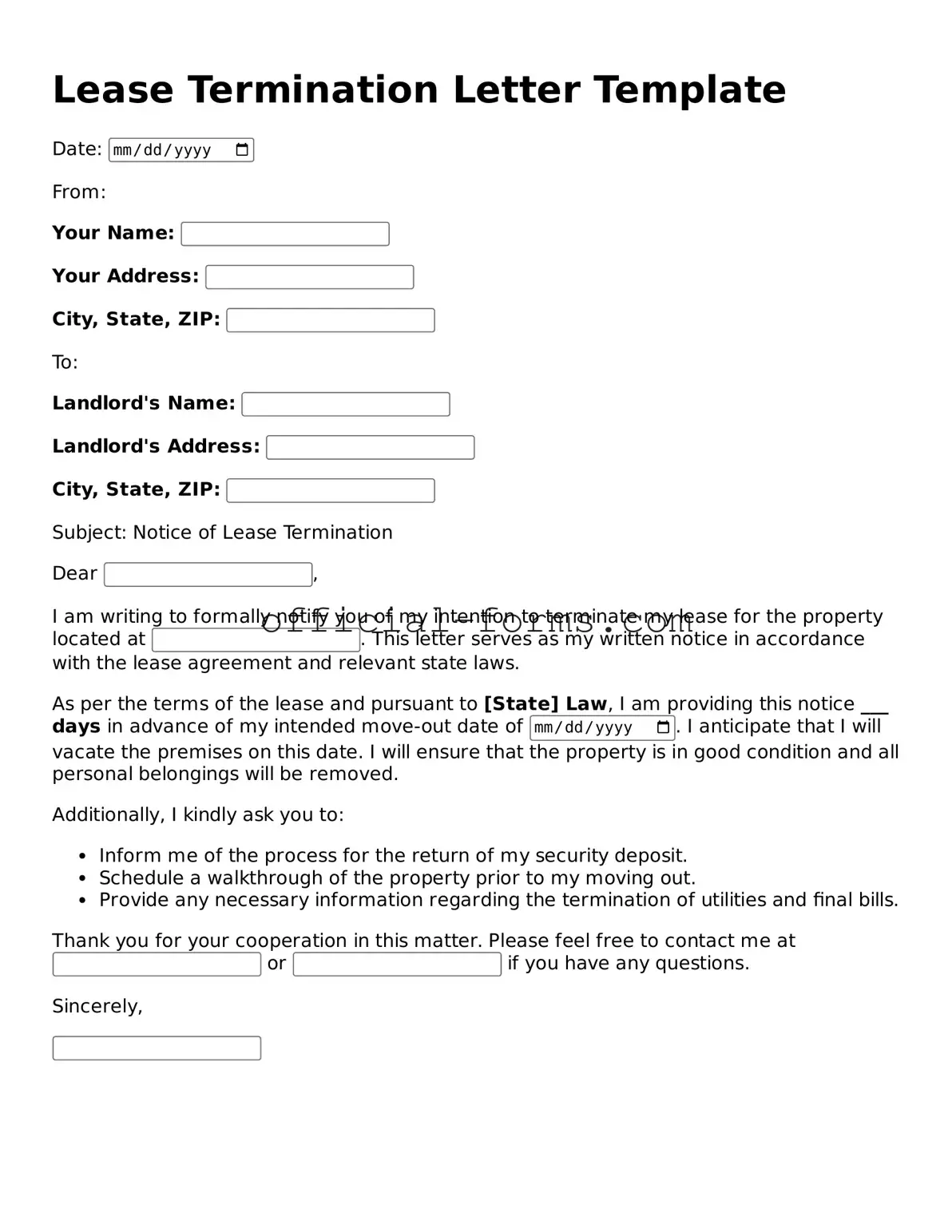When it comes to ending a lease, many people overlook the importance of a well-crafted Lease Termination Letter. This document is essential for formally notifying your landlord of your intent to vacate. However, mistakes can easily happen. Here are nine common errors to avoid when filling out this crucial form.
First, failing to include the correct address of the rental property is a frequent oversight. It might seem minor, but without this information, the landlord may not recognize which lease you are terminating. Always double-check that you have written the full address accurately.
Another common mistake is neglecting to specify the date you plan to vacate the property. This date is vital because it outlines your timeline for leaving. If you don’t provide a clear end date, it can lead to confusion and potential disputes over rent payments.
Many people also forget to review their lease agreement for any specific termination requirements. Some leases may have unique clauses regarding notice periods or methods of communication. Ignoring these details can result in a breach of contract, which may lead to financial penalties.
Additionally, not signing the letter is a significant error. A Lease Termination Letter must be signed to be considered valid. Without your signature, the landlord may dismiss the letter entirely, leaving you in a precarious position regarding your tenancy.
Another mistake is using vague language. Clarity is key in legal documents. Instead of saying, “I will be leaving soon,” state your exact move-out date. Clear communication helps prevent misunderstandings and ensures that both parties are on the same page.
People often forget to include a forwarding address for the return of their security deposit. This is a crucial detail. Without a forwarding address, your landlord may have difficulty returning your deposit, which could lead to further complications.
Moreover, failing to keep a copy of the letter for your records is a common oversight. After sending the letter, it’s wise to retain a copy for your files. This serves as proof of your notice and can protect you in case of any disputes later on.
Some individuals also neglect to send the letter via a trackable method. Sending it through regular mail might leave you without proof of delivery. Consider using certified mail or another method that provides confirmation of receipt.
Lastly, not following up with the landlord after sending the letter can be a missed opportunity. A brief conversation can clarify any questions and ensure that both parties are aligned on the next steps. Open communication can smooth the transition and help maintain a positive relationship.
By avoiding these common mistakes, you can ensure that your Lease Termination Letter is effective and serves its purpose. Taking the time to carefully craft this document can save you from potential headaches down the road.
